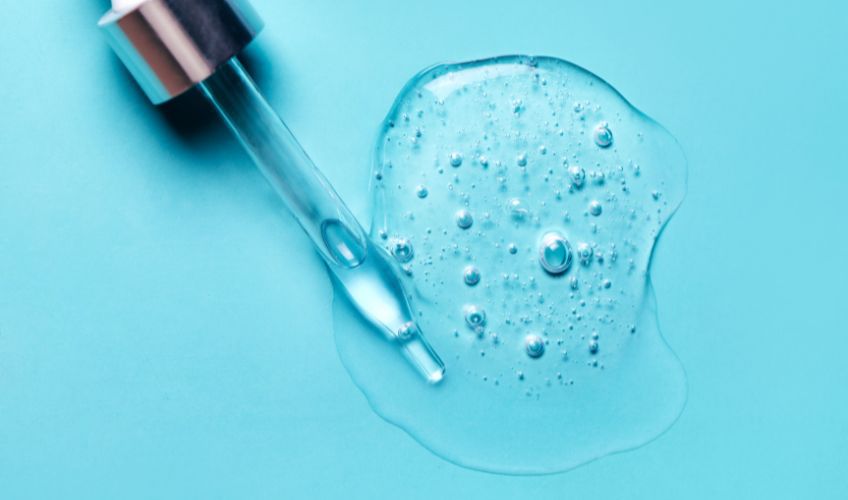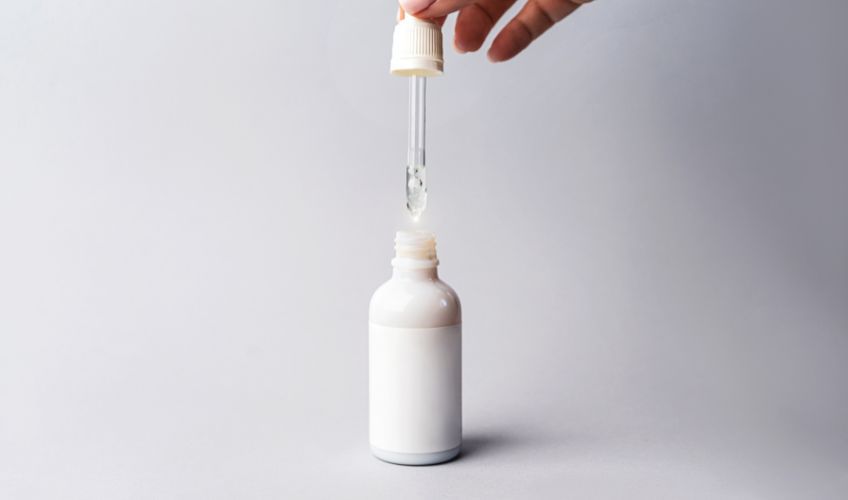Numerous products available today claim to significantly improve skin health. Among these, Hyaluronic acid and Retinol are highly sought-after ingredients commonly used to enhance skin quality.
If you're curious about whether Hyaluronic acid and Retinol can be used simultaneously, this article aims to dispel any uncertainties.
To determine if Hyaluronic acid and Retinol can be incorporated together in a skincare regimen, it's essential to understand their individual properties.
Hyaluronic Acid

canvaHyaluronic acid is crucial for hydrating the skin and maintaining its plumpness by retaining water levels (1). This is due to Hyaluronic acid's ability to draw moisture from the air and lock it into the skin.
It also provides hydration to joints and eyes, leading to a smoother skin texture and relief for dry eyes. Moreover, it counters aging by diminishing the visibility of wrinkles and fine lines.
Retinol
Retinol, a type of Vitamin A, is renowned for its anti-aging benefits and its capacity to boost skin cell turnover (2). Vitamin A revitalizes the skin, making it an excellent skincare ingredient.

Using Retinol nourishes the skin, giving it a radiant appearance. This potent ingredient also stimulates collagen production, which supports muscular structures and enhances skin smoothness, brightness, and firmness.
Additionally, Retinol aids in evening out skin tone and regulating oil production, which helps prevent signs of premature aging (3).Applying retinol nightly diminishes wrinkles and promotes youthful, firm skin.
How to Use Hyaluronic Acid and Retinol Together?
If you wish to use both ingredients simultaneously, you must first test them separately. Begin by applying Retinol once a week and monitoring its effect on your skin. This initial use helps Retinol penetrate deeply into the pores, maximizing its benefits. If your skin tolerates it well, you can gradually increase the frequency to 2-3 times per week.
Once your skin adapts to Retinol, you can then slowly introduce Hyaluronic Acid into your skincare routine. Start by using it once and then increase the frequency based on your skin's response.
What Is the Correct Order to Use Hyaluronic Acid and Retinol?
The proper sequence for applying Hyaluronic Acid and Retinol depends significantly on your skin type and the specific results you aim to achieve.
- Retinol can cause dryness and sometimes irritate the skin.
- Hyaluronic Acid acts as a moisturizer and helps reduce irritation.
Given these properties, it is advised to choose the order of application based on your skin type.
For dry skin, apply Hyaluronic Acid to your face immediately after washing, and once it is absorbed, follow with Retinol.
If you have oily skin, use Retinol first to allow it to penetrate the pores, then apply Hyaluronic Acid for moisturizing.
Side Effects of Hyaluronic Acid and Retinol Combination
There are generally no adverse effects from using Hyaluronic Acid and Retinol together. However, it is crucial to understand the characteristics of each ingredient and your skin type.
By considering these factors and conducting proper research, you can achieve synergistic effects from these ingredients. They can address various skin concerns and, when used correctly, prevent potential side effects.
It is important to increase the concentration and frequency of these products slowly. Knowing how to properly combine them is essential; otherwise, you may not fully benefit from either ingredient.
People with sensitive skin should exercise caution when using Retinol (5). Retinol can open up skin pores and cause dryness. Consulting with a dermatologist or skincare expert is highly recommended.
Conclusion
As we age, skin loses its natural elasticity and hydration. External replenishment becomes necessary. Combining Hyaluronic Acid and Retinol can effectively address skin issues, resulting in vibrant, radiant skin.
Although some ingredients can diminish each other's effectiveness, Hyaluronic Acid and Retinol do not interfere with one another. Therefore, the answer to whether you can use Hyaluronic Acid and Retinol together is a resounding YES!
Hyaluronic Acid provides moisture, while Retinol contributes to skin firmness.
Examine your skin or seek advice from a dermatologist to determine your skin type before using both ingredients safely. Nevertheless, if you have any uncertainties, it is always wise to consult a skincare professional to obtain the optimal solution for your skin concerns.
Related Articles
How to Use Hyaluronic Acid and Vitamin C Serum
Juvederm vs. Restylane: Which Filler is Right for You?
